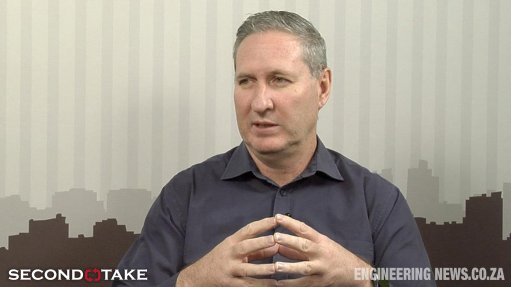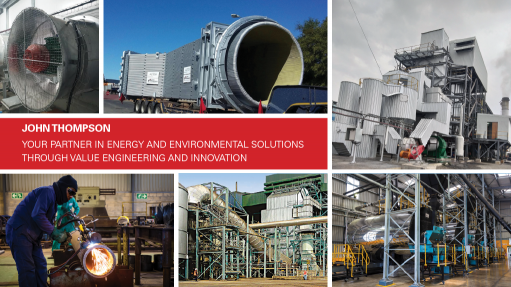Vanadium batteries the solution to meet growing energy storage demand – Bushveld
Vanadium redox flow batteries (VRFBs) are a front-runner technology for meeting the growing demand in the energy storage sector, says Bushveld Energy CEO Mikhail Nikomarov.
During a webinar on energy storage this week, he noted that data by US-based multiservice professional firm Navigant shows that VRFB demand is expected to increase to over 18 000 MWh by 2027.
However, keeping market researcher BMI Research’s suggested 25% market share in mind, Nikomarov on Tuesday noted that this could increase to over 27 500 MWh by 2027.
If these forecasts hold true, 82 000 t of vanadium will be needed just for VRFBs, he said. Taking the BMI forecast into account, this could increase to over 96 000 t.
“This is a significant demand, and actually presents us with an upside,” he said.
Nikomarov said VRFBs offered clear advantages, both technically and financially, which “sets it apart in large-scale stationary applications”.
Despite vanadium’s limited share in current markets, the demand for vanadium – which offers future opportunities in consumer and mobile energy storage – remains underwritten by the steel market.
Existing demand from the steel and chemicals markets, Nikomarov said, implies a compound annual growth rate (CAGR) for vanadium demand of 2.5% from 2017 to 2027.
The high dependence of VRFB on vanadium may increase this demand CAGR to 8.4%, he added.
Supporting this growth, is the industry’s optimism surrounding VRFBs.
Counting in the battery technology’s favour, he highlighted, was the evolution of energy storage cases that are “actually what a vanadium battery does”, which is longer duration and multiple purposes from one battery; as well a reduction of cost and consolidation.
Nikomarov also pointed out that the technology has Chinese political support, which is leading to greater VRFB deployment in Asia, compared with other regions.
He added that VRFB technology also formed part of China’s new National Development Plan.
Other advantages include an internal rate of return of between 2% and 22%, flexibility in its uses, as well as a movement to long-duration storage.
Compared with lithium-ion batteries, which Nikomarov noted are much stronger for shorter duration applications, VRFB growth will be seen in larger uses, such as utility-scale energy storage over the next decade, especially considering that these have a need for transmission, distribution and generation capacity.
Lithium-ion batteries, on the other hand, are more commonly used in power markets where frequency control is remunerated and monetised.
“It’s important to [keep in mind] that within this kind of framework, it’s not really exclusive. There’s a lot of areas in between where you could use either technology from a technical, commercial or hybrid perspective,” Nikomarov stated.
Additionally, he highlighted that those who require long duration, such as utilities, will comprise about 90% of the market, which is very favourable to the growth and increased use of VRFBs.
Shorter duration storage, which is an established market, is what VRFB has historically been used for, but it is not growing as fast as some of the other sectors, and will not be such a large market, Nikomarov said.
Further, despite initial start-up costs being a bit more expensive, he believes that, in the case of VRFB, which can be used more as a result of a better cyclability, end-users have the potential to get a greater capitalisation.
“It brings the cost of the battery down and it brings it down to something that is below lithium. And in some cases, [this decrease in cost is significant].”
In terms of pricing and costing, Nikomarov referred to data from Navigant, which forecast that cost decreases for lithium-ion are expected to slow, whereas the same degree of slowdown cannot be applied to VRFBs.
“Costs are expected to come down for all technologies owing to scale, completion and lower transactions,” he said, adding that vanadium, which is used in both the cathode and anode of a VRFB, will further reduce the cost of the battery technology.
“In summation, we see an extremely exciting sector in vanadium. If you look at steel, and its current application in allows, there’s a CAGR of about 2.5%. Once we start looking into some of the scenarios on vanadium battery adoption, that number increases,” Nikomarov enthused, adding that, combined, both the vanadium and steel markets can expect to see a growth of over 10% over the next eight years.
GROWTH ACCELERATION
Bushveld Minerals CEO Fortune Mojapelo, meanwhile, said the primary vanadium producer has articulated an ambition to grow its production platform to more than 10 000 t/y of vanadium in the medium term, which will principally be driven by its subsidiary Bushveld Vametco.
Of this target, 5 000 t/y will be from Vametco, where the producer is aiming to further increase its production capacity.
Bushveld, which is also the parent company of Bushveld Energy, continues to look at further targeted brownfield opportunities, which it believes will see the company grow to beyond the 5 000 t/y of vanadium envisaged for Vametco.
“We see portfolio diversification through the supply of electrolyte for VRFBs for energy storage and particularly some of the activities. We are confident that the stage is set to really unlock the opportunity for the downstream integration through Bushveld Energy in the energy storage sector,” Mojapelo commented.
Meanwhile, Bushveld looks forward to completing the commissioning and development of a VRFB battery, with a peak of over 120 kWh, for State-owned Eskom’s research facility.
The battery is expected to be commissioned during the last quarter of this year.
The producer is also working with the Industrial Development Corporation on an electrolyte production facility with multiple megalitre yearly production capacity, located in the East London Industrial Development Zone.
Comments
Press Office
Announcements
What's On
Subscribe to improve your user experience...
Option 1 (equivalent of R125 a month):
Receive a weekly copy of Creamer Media's Engineering News & Mining Weekly magazine
(print copy for those in South Africa and e-magazine for those outside of South Africa)
Receive daily email newsletters
Access to full search results
Access archive of magazine back copies
Access to Projects in Progress
Access to ONE Research Report of your choice in PDF format
Option 2 (equivalent of R375 a month):
All benefits from Option 1
PLUS
Access to Creamer Media's Research Channel Africa for ALL Research Reports, in PDF format, on various industrial and mining sectors
including Electricity; Water; Energy Transition; Hydrogen; Roads, Rail and Ports; Coal; Gold; Platinum; Battery Metals; etc.
Already a subscriber?
Forgotten your password?
Receive weekly copy of Creamer Media's Engineering News & Mining Weekly magazine (print copy for those in South Africa and e-magazine for those outside of South Africa)
➕
Recieve daily email newsletters
➕
Access to full search results
➕
Access archive of magazine back copies
➕
Access to Projects in Progress
➕
Access to ONE Research Report of your choice in PDF format
RESEARCH CHANNEL AFRICA
R4500 (equivalent of R375 a month)
SUBSCRIBEAll benefits from Option 1
➕
Access to Creamer Media's Research Channel Africa for ALL Research Reports on various industrial and mining sectors, in PDF format, including on:
Electricity
➕
Water
➕
Energy Transition
➕
Hydrogen
➕
Roads, Rail and Ports
➕
Coal
➕
Gold
➕
Platinum
➕
Battery Metals
➕
etc.
Receive all benefits from Option 1 or Option 2 delivered to numerous people at your company
➕
Multiple User names and Passwords for simultaneous log-ins
➕
Intranet integration access to all in your organisation

















